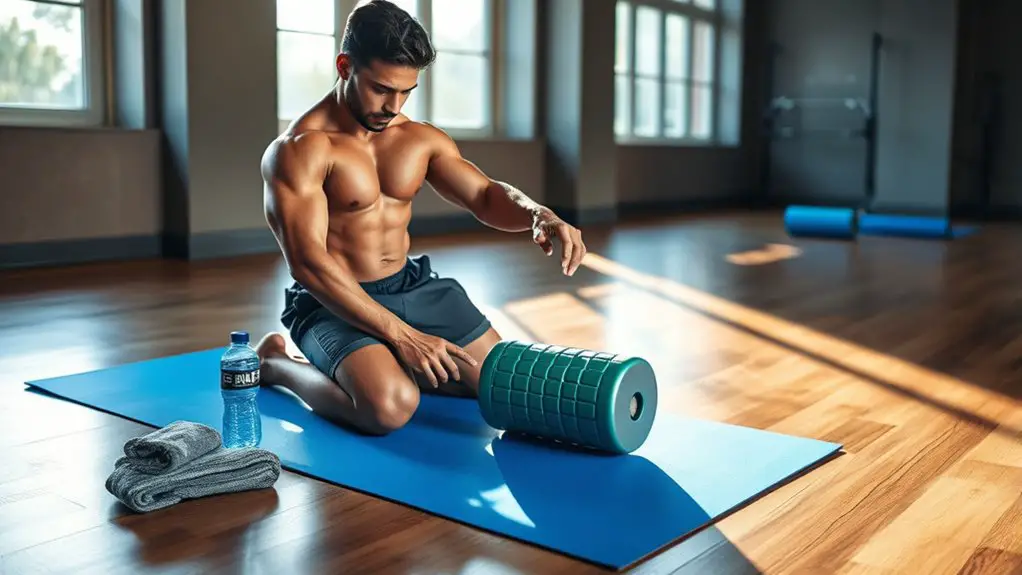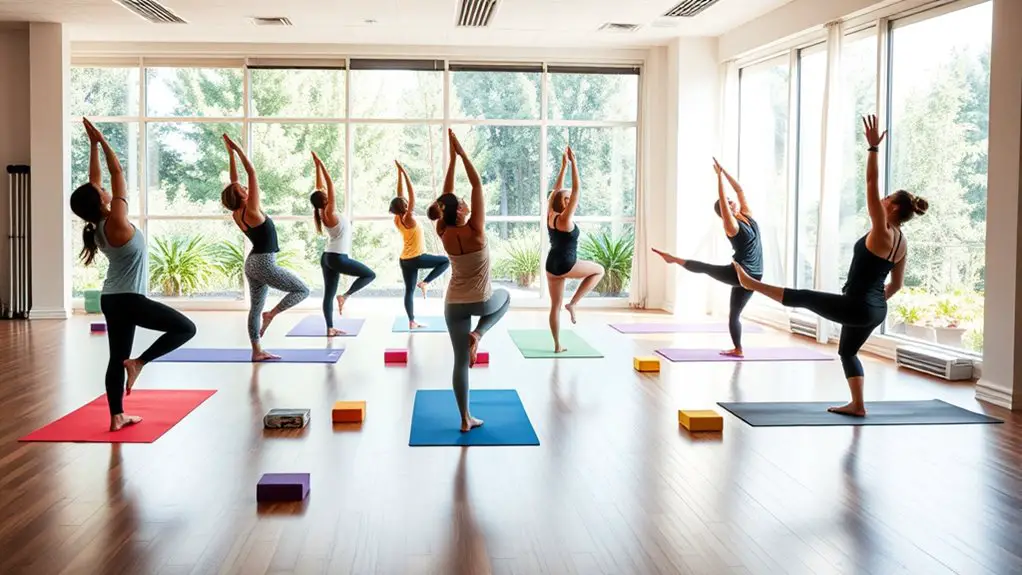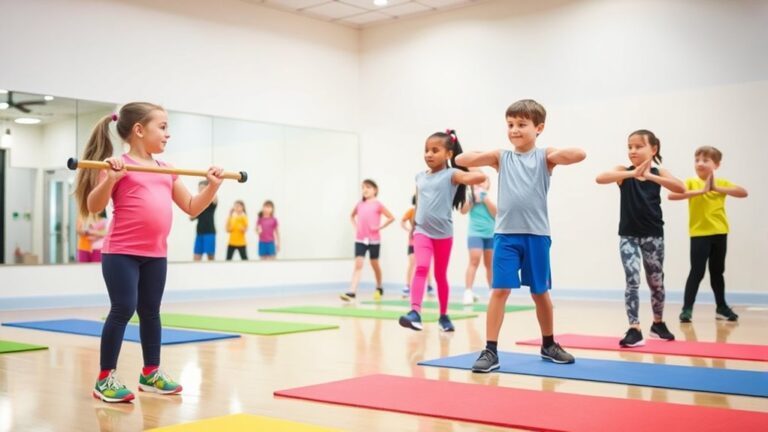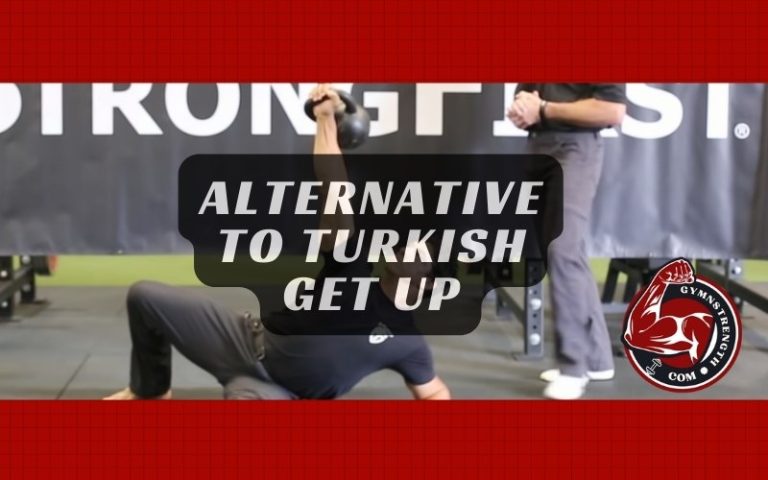How to Improve Your Range of Motion Through Gym Training

To improve your range of motion through gym training, focus on dynamic stretching during warm-ups to increase blood flow and flexibility. Follow it with static stretching post-workout to reduce soreness. Incorporate foam rolling to release muscle tension and include joint mobility exercises for injury prevention. Strengthening weak muscles supports your joints and enhances movement. Don’t forget the role of proper nutrition and hydration in supporting your flexibility goals, and there’s so much more to explore.
Understanding Range of Motion and Its Importance

Range of motion (ROM) is a crucial aspect of physical fitness that often gets overlooked. Understanding the different range types—active, passive, and functional—can greatly enhance your workouts. Each type plays a unique role in how your body moves and performs.
Mobility factors, such as muscle flexibility, joint health, and neuromuscular control, contribute to your overall ROM. By focusing on these elements, you can improve your athletic performance and reduce the risk of injury. It’s essential to assess your current ROM and identify any limitations. Knowing where you stand allows you to target specific areas for improvement.
Incorporating exercises that enhance your ROM not only boosts your physical capabilities but also increases your confidence in your movements. Committing to this journey will lead to greater strength, agility, and overall fitness. So, acknowledge the importance of ROM and make it a priority in your training regimen.
Incorporating Dynamic Stretching Into Your Warm-Up
Incorporating dynamic stretching into your warm-up can greatly enhance your range of motion and reduce the risk of injury. You’ll want to focus on effective exercises that not only prepare your muscles but also improve your overall performance. Timing your warm-up routine is essential, so let’s explore how to make the most of this important part of your training.
Benefits of Dynamic Stretching
Dynamic stretching serves as a powerful tool in your warm-up routine, offering numerous benefits that can enhance your performance and prevent injuries. By incorporating dynamic stretches, you’ll increase blood flow to your muscles, improving flexibility and range of motion. This isn’t just about feeling good; it’s about achieving improved athletic performance. As you prepare your body for activity, dynamic stretching readies your joints and muscles for the movements ahead, reducing the risk of strains. Plus, it boosts your overall agility and coordination, making you more effective in your workouts. Embracing these dynamic stretching benefits sets a solid foundation for your training sessions, allowing you to push your limits and reach your fitness goals with confidence.
Effective Dynamic Stretching Exercises
As you gear up for a workout, incorporating effective dynamic stretching exercises can set the tone for your performance. Dynamic warm ups are essential for increasing blood flow and preparing your muscles for action. Start with mobility drills like leg swings and arm circles to enhance your range of motion. These movements engage multiple muscle groups, improving flexibility and coordination. Consider incorporating walking lunges and high knees into your routine to further activate your body. Remember, the goal is to stimulate your muscles without overexerting them. By making dynamic stretching a priority in your warm-up, you’ll not only enhance your performance but also reduce the risk of injury, ensuring that you’re ready to tackle your workout with confidence and vigor.
Timing Your Warm-Up Routine
While a well-timed warm-up can markedly enhance your performance, it’s essential to integrate dynamic stretching effectively into your routine. To optimize your range of motion, focus on the warm-up duration and intensity. Aim for a warm-up of about 10-15 minutes, ensuring it gradually increases in intensity. Start with low-impact movements to raise your heart rate, then shift into dynamic stretches that mimic your workout activities. This method not only prepares your muscles but also enhances flexibility and reduces injury risk. Remember, the goal is to activate your muscles without overexerting them. Prioritize quality over quantity, and you’ll notice a significant improvement in your overall performance and range of motion. Stay committed, and your efforts will pay off!
Benefits of Static Stretching Post-Workout
Although many gym-goers overlook static stretching post-workout, it’s one of the most effective ways to enhance your range of motion and promote recovery. Incorporating static stretching techniques after your training not only helps lengthen muscles but also reduces soreness and improves flexibility. This practice can make a significant difference in your overall performance and recovery.
Here’s a quick overview of the benefits of static stretching:
| Benefit | Description |
|---|---|
| Enhances Flexibility | Helps increase your overall range of motion. |
| Reduces Muscle Soreness | Alleviates tightness and discomfort post-exercise. |
| Promotes Relaxation | Encourages a calming effect on the body. |
| Improves Circulation | Enhances blood flow to the muscles. |
| Aids in Injury Prevention | Decreases the risk of future injuries. |
Utilizing Foam Rolling for Muscle Recovery

Foam rolling is an essential tool for enhancing muscle recovery and improving your range of motion. By effectively releasing tension in your muscles, you can experience less soreness and greater flexibility. Let’s explore the benefits of foam rolling and some techniques to maximize its effectiveness in your routine.
Benefits of Foam Rolling
Muscle recovery can greatly benefit from incorporating foam rolling into your routine. By utilizing effective foam rolling techniques, you can alleviate muscle soreness and promote faster recovery after your workouts. Foam rolling helps to release muscle tightness and improve blood flow, which can enhance nutrient delivery to your muscles. This, in turn, accelerates the healing process and reduces the risk of injury. Additionally, foam rolling can increase your flexibility and range of motion, allowing you to perform exercises more effectively. The muscle recovery benefits extend beyond just physical improvement; it also contributes to your overall well-being by reducing stress and promoting relaxation. Make foam rolling a staple in your training regimen, and you’ll notice significant gains in your performance.
Techniques for Effective Use
To maximize the benefits of foam rolling, it’s important to use effective techniques that target specific muscle groups. Start with slow, deliberate movements over the muscle you want to address, applying pressure for about 30 seconds. Focus on areas that feel tight or sore, as these are often where restrictions in your range of motion occur. Incorporate active recovery by combining foam rolling with stretching post-workout; this enhances your flexibility techniques and aids in muscle recovery. Remember to breathe deeply and stay relaxed while rolling, as tension can hinder the process. Consistency is key—aim for a few sessions a week to notice significant improvements in your mobility and overall performance. You’ve got this!
Engaging in Joint Mobility Exercises
Releasing your body’s full potential starts with engaging in joint mobility exercises, which are essential for enhancing flexibility and preventing injury. By incorporating these practices into your routine, you’ll not only improve your range of motion but also boost your overall performance. Here are three key benefits of joint mobility exercises:
Engaging in joint mobility exercises unlocks your body’s potential, enhancing flexibility and preventing injury for improved performance.
- Enhanced Joint Activation: Proper mobility drills prepare your joints for movement, reducing the risk of strains and sprains.
- Increased Flexibility: Regularly practicing mobility exercises improves your muscle elasticity, allowing for smoother, more fluid movements.
- Injury Prevention: By focusing on mobility, you’ll strengthen the connective tissues around your joints, minimizing the likelihood of injuries.
Commit to these exercises, and you’ll feel the difference in your workouts and everyday activities. Remember, a well-rounded approach to training includes prioritizing your joint health, setting you up for long-term success.
Implementing Yoga and Pilates for Flexibility

While many people associate yoga and Pilates primarily with relaxation, these practices offer powerful benefits for enhancing flexibility and overall range of motion. Incorporating yoga into your routine can greatly improve your body’s flexibility through various poses that stretch and strengthen muscles. You’ll experience yoga benefits such as increased blood flow and reduced muscle tension, which are essential for maintaining a healthy range of motion.
Similarly, Pilates techniques focus on core strength and stability, promoting aligned postures and controlled movements. By engaging in both yoga and Pilates, you’ll not only enhance your flexibility but also develop better body awareness and coordination. These practices complement each other, creating a balanced approach to flexibility training. So, whether you’re trying to touch your toes or perform complex movements, integrating these disciplines into your gym training can reveal your body’s full potential and help you move with greater ease and confidence.
Strengthening Weak Muscles to Enhance Mobility
Strengthening weak muscles is essential for enhancing mobility, as it directly impacts your ability to move freely and efficiently. By addressing strength imbalances, you’ll not only improve muscle activation but also prevent injuries and enhance overall performance. Here are three key benefits to focus on:
- Increased Range of Motion: Stronger muscles support joints better, allowing for smoother and more expansive movements.
- Improved Stability: Strengthening weaker muscles enhances your body’s stability, making everyday activities easier and safer.
- Enhanced Athletic Performance: A balanced strength foundation can give you an edge in your favorite sports and physical activities. Incorporating exercises like goblet squats can help target weak muscles effectively while minimizing joint strain.
The Role of Proper Nutrition in Flexibility

To maximize your range of motion and overall mobility, proper nutrition plays a significant role alongside targeted strength training. Achieving a macronutrient balance is essential; you’ll need adequate protein for muscle repair, healthy fats for joint health, and carbohydrates to fuel your workouts. This balance not only supports your training but also aids in enhancing flexibility.
Hydration impact can’t be overlooked, either. Staying well-hydrated keeps your muscles and joints lubricated, reducing stiffness and promoting smoother movements. Dehydration can lead to decreased performance and increased risk of injury, which ultimately hinders your flexibility goals.
Incorporating foods rich in antioxidants, vitamins, and minerals will further support your body’s ability to recover and adapt. By fueling your body with the right nutrients, you’ll set a solid foundation for improved range of motion, allowing you to move confidently and freely in your training and daily activities.
Tracking Progress and Staying Consistent
How can you effectively track your progress and maintain consistency in your flexibility training? Achieving your goals requires more than just effort; it calls for a strategic approach. Here are three powerful strategies to keep you on track:
- Progress Journaling: Document your flexibility sessions and note improvements in your range of motion. Reflecting on your journey boosts motivation and reinforces consistency habits.
- Goal Setting: Define clear, achievable goals for your flexibility training. Break them down into smaller milestones to celebrate as you progress.
- Accountability Partners: Find someone who shares your fitness aspirations. Partnering up can enhance motivation and create a support system, making your journey more enjoyable.
Frequently Asked Questions
How Often Should I Train to Improve My Range of Motion?
Imagine a tree growing tall and strong, its branches stretching wide. Just like that, your body needs regular care. To improve your range of motion, you should aim for a stretching frequency of at least three to four times a week. Training consistency is key; it’s about making those small, dedicated efforts over time. With commitment, you’ll not only enhance flexibility but also reveal your body’s full potential. Keep pushing forward!
Can Age Affect My Range of Motion Improvement?
Yes, age can affect your range of motion improvement due to age-related limitations that often arise. As you get older, joint health can decline, making it harder to achieve the flexibility you desire. However, don’t let that discourage you! With consistent training, proper techniques, and a focus on mobility exercises, you can still make significant gains. Remember, it’s never too late to enhance your range of motion and improve your overall well-being.
What Common Mistakes Hinder Flexibility Progress?
When you’re aiming to improve flexibility, common mistakes can really hold you back. Skipping dynamic stretching before workouts can leave your muscles unprepared, while overdoing static stretching afterward might lead to injury. It’s essential to balance both types effectively. Also, neglecting consistency can stall your progress. Remember, it’s about gradual improvement, so be patient, stay committed, and listen to your body. You’ll see the results with the right approach!
Is It Safe to Push Through Pain While Stretching?
Pushing through pain while stretching is like driving a car with the check engine light on; it’s risky and often leads to bigger problems. It’s essential to respect your body’s pain tolerance and recognize the difference between discomfort and actual pain. Focusing on safe stretching techniques helps you improve flexibility without injury. Always listen to your body, and remember that gradual progress is more valuable than pushing through pain for quick results.
How Long Does It Typically Take to See Results?
When you’re looking at a results timeline, it often varies based on several consistency factors. Generally, you might start noticing improvements within a few weeks if you’re dedicated to your routine. Staying consistent with your efforts, focusing on proper techniques, and gradually increasing intensity can greatly accelerate your progress. Remember, everyone’s body responds differently, so it’s crucial to be patient and stay motivated throughout your journey to achieve the desired results.





